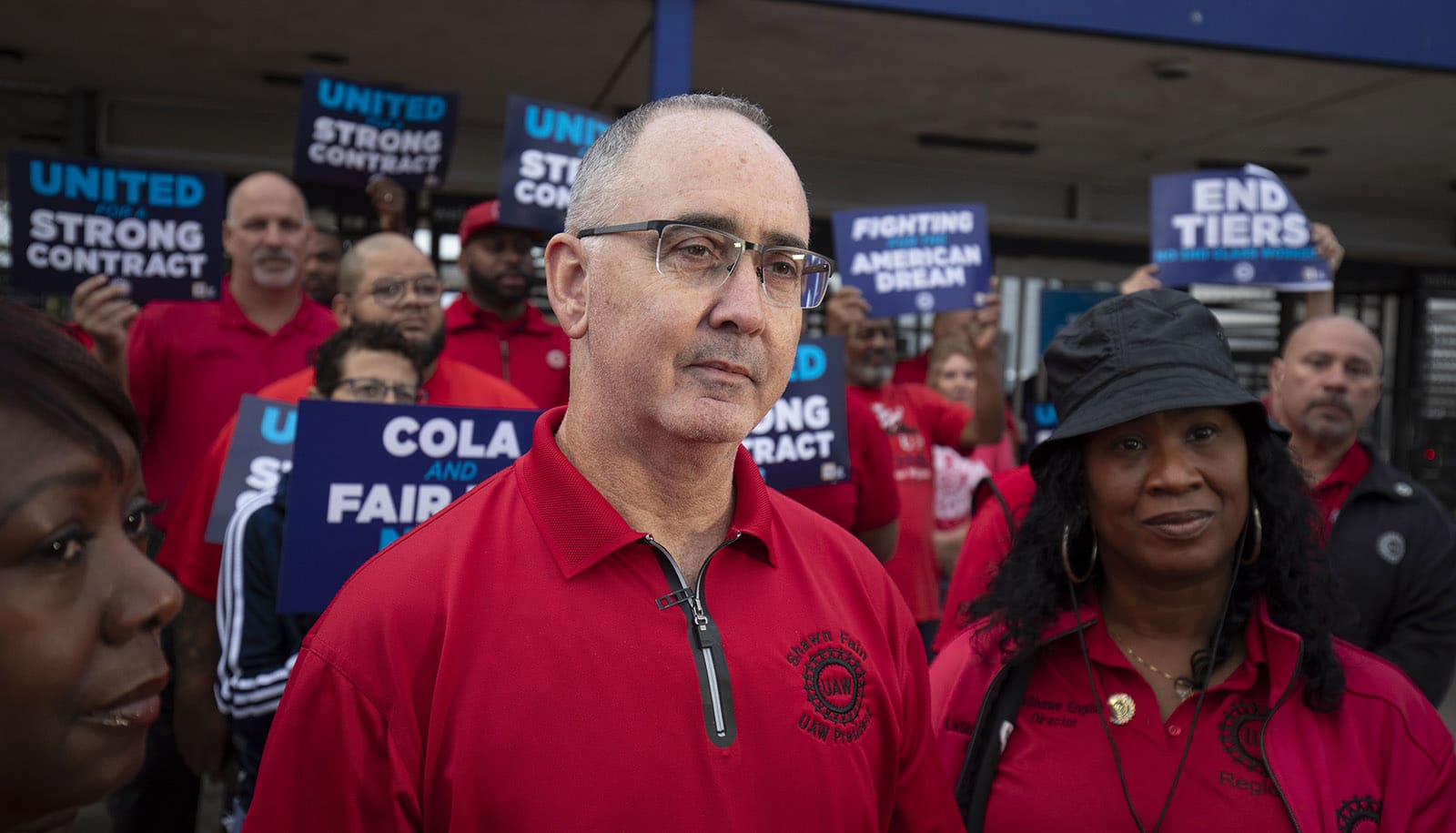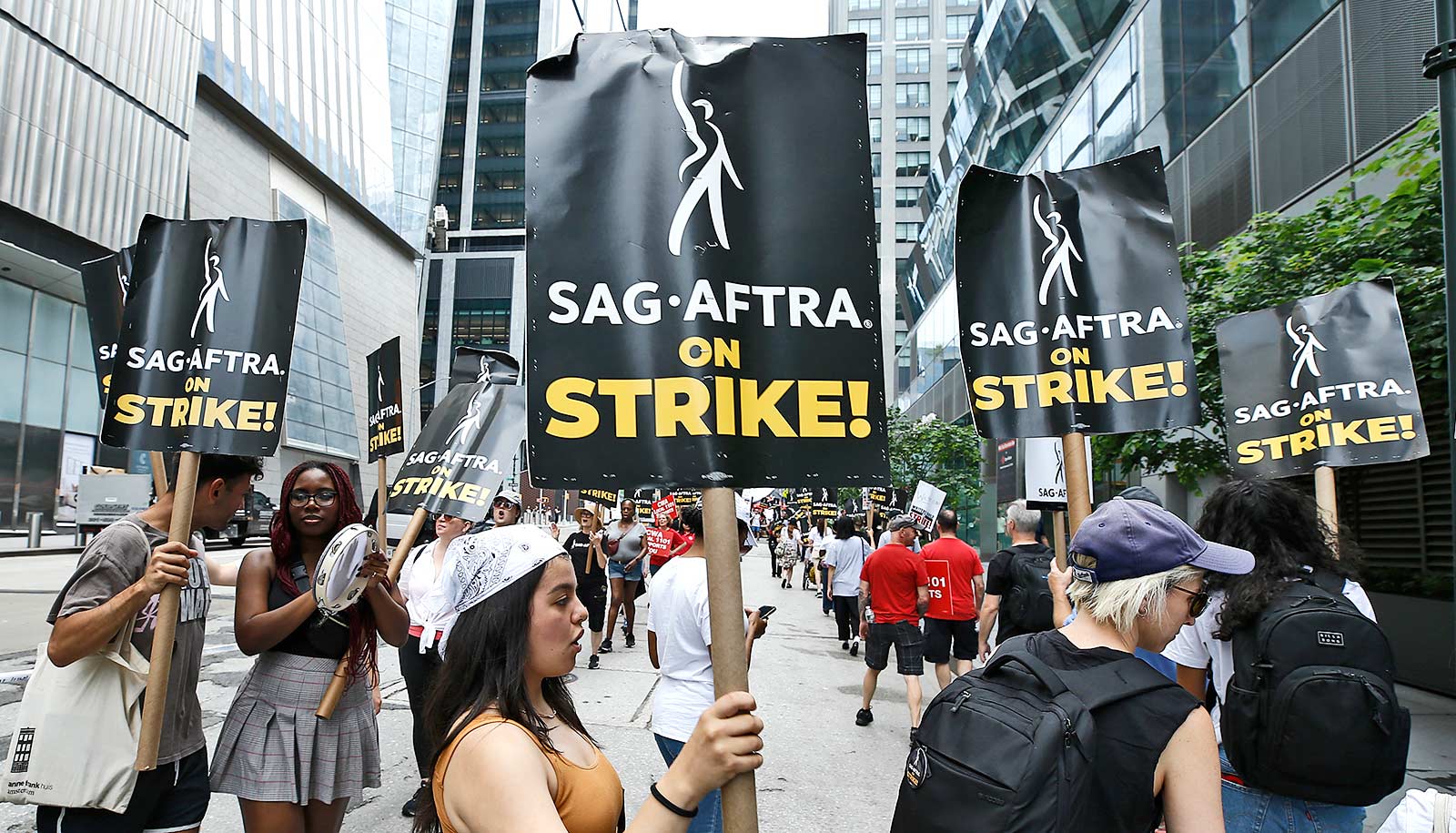
Breaking with the long-standing tradition of the "handshake ceremony" with the auto executives of the Big Three auto makers to open contract talks, United Auto Workers president Shawn Fain instead speaks with and does "members' handshakes" with Stellantis workers at the Stellantis Sterling Heights Assembly Plant on July 12, 2023 in Sterling Heights, Michigan. (Credit: Bill Pugliano/Getty Images )
What’s at stake in UAW negotiations with automakers?
An expert clarifies what's at stake for the United Automobile Workers, or UAW, in their contract negotiations with automakers.
An expert clarifies what’s at stake for the United Automobile Workers, or UAW, in their contract negotiations with automakers.
This negotiation with Ford, General Motors, and Stellantis comes on the heels of a leadership change in the UAW union . UAW President Shawn Fain was elected in March 2023 and has brought a more aggressive approach to negotiations with the Big Three domestic automakers.
“Deutsche Bank estimates that a strike would cost each affected automaker about $400 million to $500 million per week of production.”
Peter Berg , a professor of employment relations and director of the School of Human Resources and Labor Relations in Michigan State University’s College of Social Science, provides insight on where the negotiations currently stand. Berg shares the implications of what an agreement, or failure to reach an agreement, by the September 14 deadline could mean:
The post What’s at stake in UAW negotiations with automakers? appeared first on Futurity .
What is the UAW demanding from the auto companies?
The negotiations—and potential strike—are based on several UAW demands, including calls to:
- Eliminate tiers on wages and benefits. Currently, domestic automakers have a tiered wage system in which those in the first tier earn about $28 per hour, while those hired after 2007 are in the second tier and earn about $16 to $19 per hour. The number of second-tier workers is growing, which is fueling this contract demand.
- Increase wages by 46% over four years.
- Restore cost-of-living allowances.
- Establish a defined benefit pension for all workers.
- Reestablish retiree medical benefits.
- Ensure the right to strike over plant closures.
- Create a working family protection program.
- Make all temporary workers permanent.
- Institute more paid time off.
- Significantly increase retiree pay.
- Possibly institute a 32-hour work week.
What are the ramifications if the UAW gets what it wants from automakers?
One estimate reported by Bloomberg news in early August suggested that the UAW contract proposals would add $80 billion in labor costs for each of the biggest US automakers over the length of the contract. Other estimates maintain that the UAW’s demands would increase hourly wage and benefit costs from $64 per hour to more than $150 per hour. These estimates suggest dramatic cost increases to US automakers, but given the nature of collective bargaining, it is highly unlikely that the UAW will achieve all its contract demands. The UAW is taking a hard line to get workers as much as possible. Auto companies will have to decide how much they can afford to agree to.
What are some of the economic impacts if the UAW strikes?
The Anderson Economic Group estimates that a work stoppage by nearly 150,000 UAW workers at GM, Ford, and Stellantis would cost more than $5 billion after 10 days. Deutsche Bank estimates that a strike would cost each affected automaker about $400 million to $500 million per week of production. These are significant costs to companies associated with a possible strike. The UAW also has a strike fund that could partially support workers for a work stoppage lasting 11 weeks. Given the position staked out by UAW President Fain, it is highly likely that a strike of some length will happen once the contract expires.
What else should people know about this situation?
This contract negotiation is a fight over the future of the auto industry. The UAW wants to take advantage of a tight labor market and the profitability of the companies to roll back previous concessions. The auto companies are moving toward electric vehicle production that will require fewer workers and different production skills. Auto companies are investing in battery plants and joint ventures with technology companies. The UAW wants the opportunity to organize and represent the workers in these plants. Just how the interests of the UAW and the auto companies are balanced and how much pressure is needed to balance these interests are at the heart of these negotiations.
Share this article:
This article uses material from the Futurity article, and is licenced under a CC BY-SA 4.0 International License. Images, videos and audio are available under their respective licenses.


